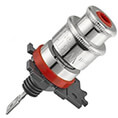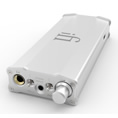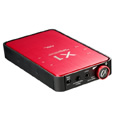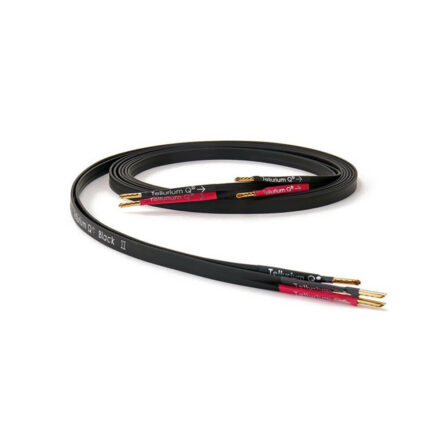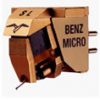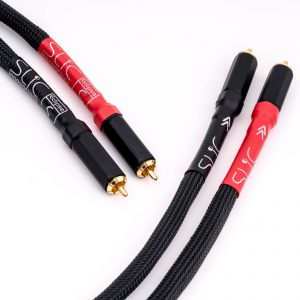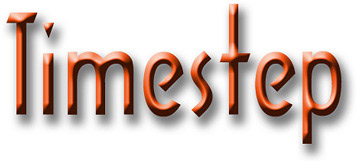The best audio cable is surely no cable at all? Every cable imparts a sonic signature of its own into your hifi system. If you are swapping one cable for another one the sound will be one of three options. Better, worse or different. It is very rarely the same. Often referred to as glorified tone controls, interconnect cables especially can make or break a system.
Many audiophiles still use a simple system consisting of CD player, amplifier and a pair of loudspeakers, nothing else. No turntable, no tuner or steaming device just plain and simple.
The CD player will be connected to the amplifier using a stereo interconnect, this is often considered the easiest test for a good cable, as simple a system as possible. Where changing a cable will result in an instant sonic difference, better, worse or different.
The cable that gets closer to the no cable at all will ultimately provide any hifi system with the “composer/performer in the room” scenario that we all crave for.
The SLiC Innovations Eclipse cable gets in our opinion closer than most. Invented in Huddersfield, patented design, manufactured in the UK and assembled by the owner of the company, to hear it is to want it. The latest owner of the cable has kindly submitted his thoughts which we have re-produced below…………
I’m not going to say that this cable sounds like no cable, because no-one knows what that would be like, but I can definitely say that, with the SLiC Eclipse C cable between my CD player and preamp, the music from my system sounds better than ever before.
Before I go into more detail I will say what my system consists of and the kind of music I listen to, and I will try to explain what sort of sound quality I look for. The system is an Esoteric X-05 SACD player; a Townshend Allegri preamp, which is a passive controller based on autoformers; a Red Dragon Audio S500, which is an American Class D power amp; and B&W 804S loudspeakers. The cables are all from Kimber. The SLiC cable replaced a Kimber Select K1021 hybrid copper and silver cable.
I listen almost entirely to classical orchestral and piano music.What I’m seeking is clarity and accuracy.That makes it possible to hear more details of the music, revealing the originality and inspiration of the composer and the skill and artistry of the performers. I want to be able to follow harmonies and counterpoint, and, in an orchestral piece, to hear as much detail as possible of the orchestration. All these things together create a more accurate, realistic and enjoyable reproduction of the recorded music.
Although people who listen to other kinds of music don’t usually explain what they are listening for in quite those terms, I think that probably what they want to hear, and what gives them greater enjoyment and satisfaction, is much the same as it is for me.
The first CD I listened to with this cable in place was a Naxos recording of the Esquisses by the nineteenth century French composer Alkan. What I immediately noticed was much greater clarity in the mid-band, by which I mean roughly the two octaves between the C below middle C and the one above it. I could hear in more detail exactly what notes were being played, and identify and appreciate the harmony. Then I began to notice similar qualities in the bass.
In the seventh piece there’s a descending arpeggio in thirds which is much clearer through the SLiC, and it’s possible follow each pair of notes on their way down. I don’t think the bass goes any deeper, as some reviews have suggested – my power amp already does a good job in that area – but it’s possible to distinguish successive notes in the bass, or analyse the notes making up a chord, to a greater degree than before.
Initially I thought the treble seemed very slightly dull, and lacking in a certain sparkle that the treble notes of a piano can have, but again I could hear greater clarity and detail, and the overall balance was accurate, with nothing appearing over-prominent or recessed. Listening to some other recordings I heard the kind of brilliance in the upper treble that is an element of realistic piano reproduction, and I think that what the SLiC cable is doing is to bring out the differing characteristics of recordings, so that you can quickly tell the difference between one with an excellent treble and one that’s slightly duller.
On a wide range of piano and orchestral recordings made over the past fifty years, I was able to hear a depth of detail that I hadn’t been aware of previously. Where there had sometimes been a rather amorphous deep bass sound I could now follow individual notes. It became possible to hear much more of harmony and counterpoint, distinguishing details that hadn’t been apparent before. Rapid notes in succession became sharper and more distinct from one another. This extra clarity and detail is evident throughout the frequency response: there are things going on in the upper treble which I hadn’t been able to distinguish and follow before in the way I can now, and the same applies in the mid-band.
As a result, rhythms become more pronounced. When the music is faster they seem bouncier and more clearly defined, and when it’s slower they make it easier and more interesting to follow.
Orchestral details are also improved. It’s not only possible to hear more of what’s happening in terms of notes, but the colours and individual tones of different instruments are sharper as well. Trumpets, for example, often sound more incisive, and trombones have more of a rasp.
In terms of dynamics, it’s now more obvious when, on an instrument such as a violin or trumpet, a sustained note swells to a louder volume or fades away. With a piano recording it’s possible to hear more of the decay of a note, or the use by the performer of the sustaining pedal. I can also hear more of the reverberation within the recording venue. One area which reviews often comment on, but I don’t find particularly important, concerns the positioning of performers. But I was struck by one passage in an orchestral piece (a Hyperion recording of music by Bantock), where woodwind instruments are being played towards the left of the sound stage, and suddenly I heard a French horn coming from behind the players and as if through a gap between them. It’s not the spatial impression itself that’s important, but that the quality of the cable allows such a detail of the music that hadn’t been evident previously to be picked out and so clearly presented.
You may wonder whether all the detail that I’ve referred to means that the overall sound is desiccated or fragmented, but that isn’t the case at all. I find that all the additional things I can hear add up to a fuller sound which is more realistic and convincing, as well is seeming to be broader than it used to be. This is a brilliant cable, which has added considerably to my enjoyment of recorded music. Although it’s not cheap it achieves more in my system than some more expensive cables have done, and I thoroughly recommend it.
Tony Williams
Note: It may be worth adding that my ears date from just before World War Two and no longer operate above 14 khz. Also that I listen at moderate levels and not at what some people call “realistic” but I find painfully loud.



